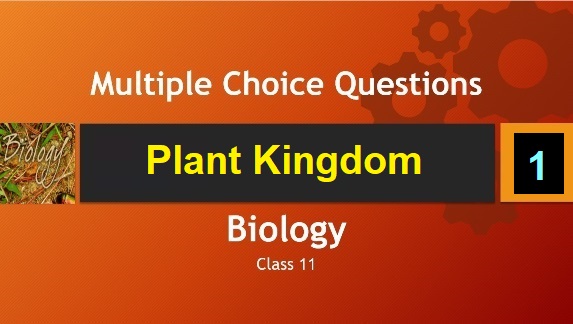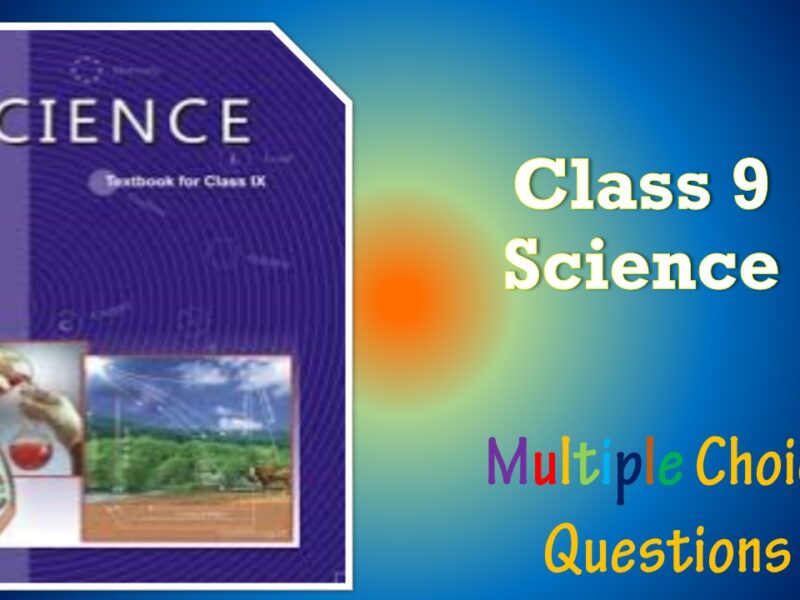CBSE Class 11 Chemistry Chapter 3 Biology Plant Kingdom Multiple Choice Questions with Answers. MCQ Questions Class 11 Biology Plant Kingdom with Answers was Prepared Based on Latest Exam Pattern. Students can solve NCERT Class 11 Biology Plant Kingdom MCQs with Answers to know their preparation level.
Students who are searching for NCERT MCQ Questions for Class 11 Biology Plant Kingdom with Answers are compiled here to get good practice on all fundamentals. Know your preparation level on MCQ Questions for Class 11 Biology with Answers. You can also verify your answers from our provided MCQ Class 11 Biology Plant Kingdom with Answers. So, ace up your preparation with MCQ of Chapter 3 Biology Objective Questions.
MCQ Questions Class 11 Biology Plant Kingdom with Answers - Set - 1
Question 1:
Gymnosperms produce neither flower nor fruit because they do not possess
(a) Embryo
(b) Ovary
(c) Ovule
(d) Seed
Correct Answer – (A)
Question 2 :
Which of the following is used to grow microbes?
(a) Laminaria
(b) Gelidium
(c) Chlorella
(d) Sargassum
Correct Answer – (B)
Question 3 :
Transgenic plants are the ones
(a) Grown in artificial medium after hybridization in the field
(b) Produced by a somatic embryo in artificial medium
(c) Generated by introducing foreign DNA in to a cell and regenerating a plant from that cell
(d) Produced after protoplast fusion in artificial medium
Correct Answer – (C)
Question 4 :
The seedless vascular plants whose sporophytes are larger than their small and independent gametophytes are
(a) Pteridophytes
(b) Angiosperms
(c) Gymnosperms
(d) None of these
Correct Answer – (A)
Question 5 :
Which of the followings plant material is an efficient water imbibant?
(a) Agar
(b) Cellulose
(c) Lignin
(d) Pectin
Correct Answer – (A)
MCQ Questions Class 11 Biology Plant Kingdom with Answers
Question 6 :
Isogamous condition with non-flagellated gametes is found in
(a) Chlamydomonas
(b) Spirogyra
(c) Volvox
(d) Fucus
Correct Answer – (B)
Question 7 :
Which of the following plants is used extensively for the study of photosynthesis?
(a) Amaranthus
(b) Asparagus
(c) Chlorella
(d) Sunflower
Correct Answer – (C)
Question 8 :
Which of the following is a liverwort?
(a) Sphagnum
(b) Funaria
(c) Marchantia
(d) Polytrichum
Correct Answer – (C)
Question 9 :
In a monoecious plant
(a) Male and female sex organs are on the same individual
(b) Male and female gametes are of two morphologically distinct types
(c) Male and female sex organs are on different individuals
(d) All the stamens are fused to form one unit
Correct Answer – (A)
Question 10 :
Rhodophyceae is called red algae because of the pigment
(a) Fucoxanthin
(b) Phycoerythrin
(c) Carotenoids
(d) Chlorophyll c
Correct Answer – (B)
- NCERT Solutions Class 11 Chemistry Chapter 1 : Some Basic Concepts of Chemistry
- NCERT Solutions Class 11 Chemistry Chapter 2 : Structure Of The Atom
- NCERT Solutions Class 11 Chemistry Chapter 3 : Classification of Elements and Periodicity in Properties
- NCERT Solutions Class 11 Chemistry Chapter 4 : Chemical Bonding and Molecular Structure
- NCERT Solutions Class 11 Chemistry Chapter 5 : States of Matter
- NCERT Solutions Class 11 Chemistry Chapter 6 : Thermodynamics
- NCERT Solutions Class 11 Chemistry Chapter 7 : Equilibrium
- NCERT Solutions Class 11 Chemistry Chapter 8 : Redox Reactions
- NCERT Solutions Class 11 Chemistry Chapter 9 : Hydrogen
- NCERT Solutions Class 11 Chemistry Chapter 10 : The s-Block Elements
- NCERT Solutions Class 11 Chemistry Chapter 11 : The p-Block Elements
- NCERT Solutions Class 11 Chemistry Chapter 12 : Organic Chemistry: Some Basic Principles and Techniques
- NCERT Solutions Class 11 Chemistry Chapter 13 : Hydrocarbons
- NCERT Solutions Class 11 Chemistry Chapter 14 : Environmental Chemistry




